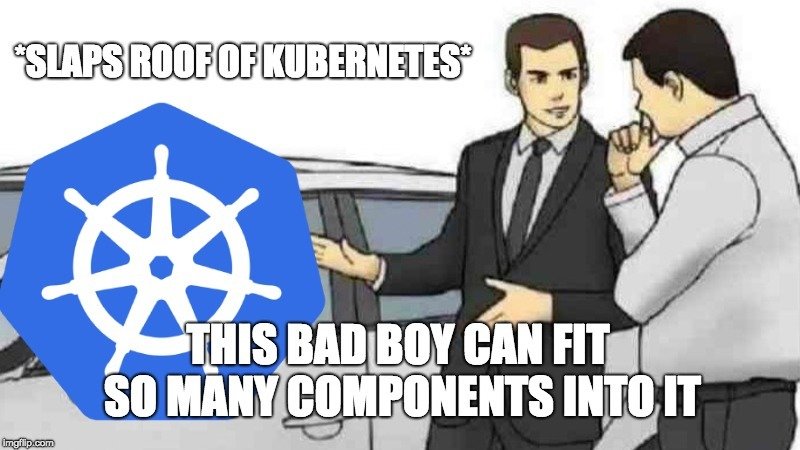Get started with Kubernetes for the price of a Ford Bronco
IT has arrived as an essential expenditure to producing revenue for an organization. Almost everything is a software expenditure. We buy hardware to run applications that run our businesses. We invest in the cloud as an alternative to run applications for our businesses. The applications we consume as a SaaS are running on public cloud infrastructure or hardware in a datacenter. This allows us to make calls, create contracts, send emails, update CRM, build fancy email campaigns that our customers will not read, provide thought leadership on LinkedIn, etc.
We would all likely agree that our world has been swallowed up by software but the same challenge persists within the IT organization. “We don’t have money for that!”
Why not?
Quotes from IT departments:
“We have zero budget for an automation strategy” – Great so you will continue to perform routine tasks with precious human hours. Good plan!
“DevOps is a just a buzz word” – That is correct if you are still siloed within your own organization or worse created a DevOps tiger team to become estranged from IT operations and development.
“The Cloud is scary…who can control the cost?” – Organizations with a plan, processes, and collaboration across groups seem to do just fine.
BUT – I hear this:
“We have a very focused Kubernetes initiative for 2022. We have to figure this thing out. It is the future and we cannot fail.”

I am amazed by the organizations that have the zeal to gamble on Kubernetes with a blindfold. It is complicated. It is rapidly changing. It is awesome. It can also be a headache.
For those that had the courage to go roll out vanilla Kubernetes and bolt solutions to form it into an enterprise platform…you should get the try hard award. For those that have actually succeeded to do that, you deserve a gold star.
How does this relate to a Ford Bronco? Glad you asked. I have been tracking the release of the Bronco for years. I loved the early 90’s model. It was such a cool truck. The 70’s version was not a menacing but beach cruiser cool. The re-release of the Bronco was supposed to wake the suburban dad life I was living. It was going to make me want to go off-roading, sleep under the starts, and hike mountains.
Then this Ford Escape/Honda CRV thing was released:

This feeling of sadness I just showed you is how I think organizations view Kubernetes. They are expecting a platform that is going to change the way they view the speed and scale of IT. It is the next IT moon landing.
I was expecting this:

While the expectations of the above Ford Bronco might be unrealistic, a rendering of this one will set me back $53,000

This is a well equipped dream starter. How does this relate to Kubernetes? Glad you asked.
Vanilla Kubernetes is an engine, chassis, some tires, transmission, and some other pieces that you need to try and bolt on. You will take that Kubernetes to your engineering team and ask them to make modifications by installing operators, integrating other tools, keeping your clusters resilient much like the project vehicle at the specialized mechanic shop. When you want to start up that 70’s Bronco that you converted to a 4 door beach driving machine…you want it to actually start up. This is a similar conundrum with Kubernetes. We all need to know what we are getting into.

An engineer on my team built a comparison table to show what vanilla Kubernetes would look like compared to Red Hat OpenShift Plus. It is compelling and cost less than a Ford Bronco to get started:

This is just a software acquisition cost. Building a talented team, training, engineering time to implement, configure, and migrate applications, etc., are added on to the cost of your Kubernetes solution. Red Hat OpenShift Platform Plus delivers a solution that has thought about the tools you will need starting on day 1.
You may need a guide along the way regardless of the decisions you make around tools. If you choose the OpenShift Platform Plus pathway, with some help from Shadow-Soft, we could be climbing that mountain to success in weeks as opposed to months or years.
Conclusion:
Ford Broncos are cool. Kubernetes is cool. A decision has to be made about each. Contact Shadow-Soft to see if we can get you into a brand new Kubernetes pilot leveraging Red Hat OpenShift Platform Plus. We have helped dozens of customers in this journey, and we want you to be the next success story.
